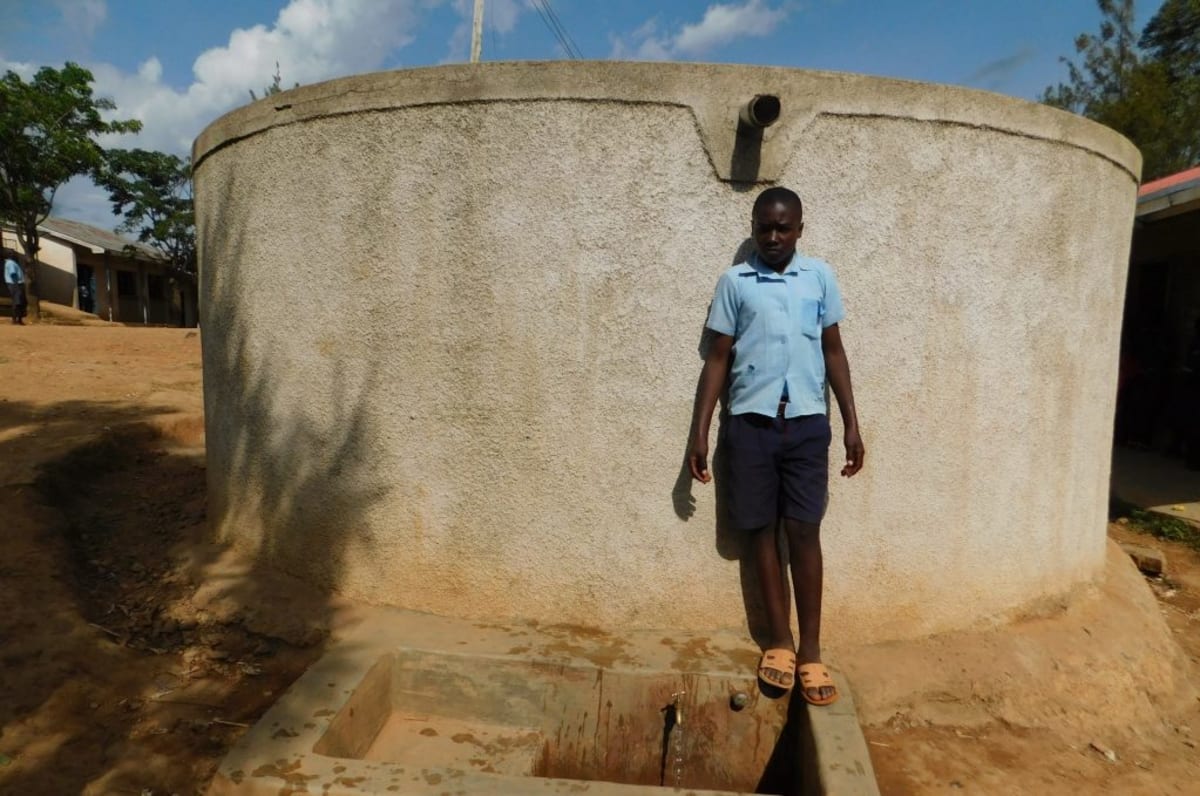People living around Kenneth Marende Primary School get up very early in the morning to make breakfast and get ready for school. Pupils start their walk to school while their parents work on their farms.
Morning study hall begins at 7am, and then normal classes stretch from 8:15am to 4:15pm. There's an hour for lunch, with short breaks between most classes. Students learn an array of subjects including science, humanities, math, and languages. This school is situated on the boundary of two counties, Vihiga and Siaya, with a good road network that makes it easier to get to school.
The school was established by the Kenyan National Assembly Speaker Mr. Kenneth Marende in 2009. It grew to a total student enrollment of 729 students. There are 16 teachers employed here, along with two support staff who help things run smoothly.
(Editor's Note: While this many people may have access on any given day, realistically a single water source can only support a population of 350-500 people. To learn more about how we determine the number of people served, click here.)
Water
The school only has a plastic tank with a small capacity of 5,000 liters. There are also a couple of barrels they use to store water, but these have rusted and affected the quality of the water.
Since there isn't enough reliable water on school grounds, students have to carry water from home every morning. Some of their containers are poured into the water barrels, while the rest is delivered to either the kitchen or stored in the back of classrooms.
Students report that they fetch their water from a variety of sources, most of which yield dirty water. For example, some villages have open wells from which water is pulled up by a rope and bucket. Other students stop by open water sources that are visibly contaminated. Their goal is to fill their containers with water no matter what the quality, since a full container of water is their ticket through the school gate.
School administration told us that a majority of student absences are due to water and hygiene-related illnesses.
Sanitation
There are only two latrines for the students and two for the staff. The latrines shared by the boys and girls are practically full to the top of the pit. There is a urinal for boys that is made from bamboo stalks that form an enclosed area. There are no handwashing stations.
The school has received two closure notices saying that if the latrine issues aren't resolved, students will be sent back home indefinitely.
Here's what we're going to do about it:
Training
Training will be held for two days. The facilitator will use PHAST (participatory hygiene and sanitation transformation), ABCD (asset-based community development), CTC (child to child), lectures, group discussions, and handouts to teach health topics and ways to promote good practices within the school. The CTC method will prepare students to lead other students into healthy habits, as well as kickstart a CTC club for the school.
Handwashing Stations
This CTC club will oversee the new facilities, such as handwashing stations, and make sure they are kept clean and in working condition. The two hand-washing stations will be delivered to the school, and the club will fill them with water on a daily basis and make sure there is always a cleaning agent such as soap or ash.
VIP Latrines
Two triple-door latrines will be constructed with local materials that the school will help gather. And with a new source of water on school grounds, students and staff should have enough to keep these new latrines clean.
Rainwater Catchment Tank
A 50,000-liter rainwater catchment tank will help alleviate the water crisis at this school. The school will also help gather the needed materials such as sand, rocks, and water from the spring for mixing cement. Once finished, this tank can begin catching rainfall that will be used by the school’s students and staff.
We and the school strongly believe that with this assistance, standards will significantly improve. These higher standards will translate to better academic performance!
This project is a part of our shared program with Western Water And Sanitation Forum (WEWASAFO). Our team is pleased to provide the reports for this project (edited for readability) thanks to the hard work of our friends in Kenya.

 Rainwater Catchment
Rainwater Catchment
 Rehabilitation Project
Rehabilitation Project






































